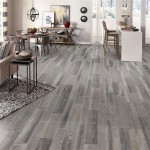Vinyl flooring is an increasingly popular option for kitchen flooring due to its low cost, water-resistance, and ease of installation. Vinyl flooring is a great choice for kitchens as it is easy to clean and maintain and can last for years with proper care. In this article, we’ll discuss the benefits of vinyl flooring in your kitchen, the types of vinyl flooring available, and the steps involved in installing it.
The Benefits of Vinyl Flooring in Your Kitchen
Vinyl flooring is an ideal choice for kitchens due to its low cost, ease of installation, and water-resistance. Vinyl flooring is also very easy to clean and maintain, and can last for many years with proper care. It is also available in a range of colors and patterns, so you can choose the perfect look for your kitchen.
Vinyl flooring is also very durable and can withstand heavy foot traffic, making it a great choice for kitchens that are used frequently. It is also slip-resistant, so it’s a good option for kitchens with children or elderly people. In addition, vinyl flooring is easy to install and doesn’t require any special tools or skills, making it a great DIY project.
Types of Vinyl Flooring
When it comes to vinyl flooring, there are several options available, each with its own advantages and disadvantages. The most common types of vinyl flooring are sheet, tile, and plank. Sheet vinyl is the most affordable option and is also the easiest to install. It is available in a range of colors and patterns, and can be cut to fit any size kitchen. Tile vinyl is more durable than sheet vinyl, and is available in a wide range of colors and patterns. Plank vinyl is the most expensive option but is also the most durable and can last for many years. It is available in a range of colors and styles, and can be cut to fit any size kitchen.
Installing Vinyl Flooring in Your Kitchen
Installing vinyl flooring in your kitchen is a relatively simple process, but there are a few steps you should follow to ensure a successful installation. Before starting, make sure the subfloor is clean and level. Then, measure the area to determine how much flooring you will need. Next, lay down the vinyl flooring, cutting it to fit as needed. Finally, use a roller to press down the vinyl flooring, making sure to get a tight bond between the vinyl and the subfloor.
Caring for Your Vinyl Flooring
Caring for your vinyl flooring is relatively easy. Regular sweeping and mopping will help keep it clean and prevent dirt and debris from building up. You should also avoid using harsh chemicals or abrasive cleaning products, as they can damage the vinyl. For tougher stains, you can use a mild detergent and warm water to clean the area.
Conclusion
Vinyl flooring is a great choice for your kitchen due to its low cost, water-resistance, and ease of installation. It is also available in a range of colors and patterns, so you can choose the perfect look for your kitchen. Installing vinyl flooring is a relatively simple process, and it is easy to clean and maintain. With proper care, your vinyl flooring can last for many years.















Related Posts








